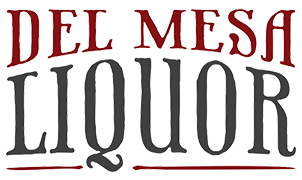The wine business can be challenging and intimidating. With such wide varieties, styles, and labels available, it can be challenging to determine which are high-quality and which are not.
Fortunately, you can distinguish high-quality wines from low-quality wines by looking for critical characteristics. The various elements that affect the quality of wine, such as balance, aroma, complexity, and flavor.
We will also guide you to online liquor stores for evaluating a bottle of wine and recognizing warning signs of subpar quality. After reading this article, you will be armed with the knowledge you need to choose wine for your enjoyment.
High-Quality Wine Vs. Low-Quality Wine
Nothing compares to the flavor of a fine glass of wine. Wine can add a touch of sophistication to any occasion, whether drinking it with a meal or just relaxing at home.
There is nothing like a good bottle of wine, whether you are an expert or just starting to explore the variety of flavors. To find the ideal wine for their palates, enthusiasts travel great distances, but selecting a wine that tastes great can be challenging.
1. Balance
A good bottle of wine has harmony among all its components and is balanced. The relationship between sweetness, acidity, tannins, and alcohol is balanced in the wine.
The components of a well-balanced wine work together harmoniously to let the flavors and aromas shine through equally. Balance is an essential component of wine tasting. A well-balanced wine will have a taste that lingers on the palate and is smooth and pleasant.
Winemakers pay close attention to the grape variety, terroir, and winemaking processes to achieve balance in wines. To achieve balance, the winemaker also alters the components of the wine, such as by adding acid or sugar.
Balance is ultimately a subjective standard that varies from person to person. But generally speaking, a balanced wine has a pleasant finish and does not overwhelm the palate with any particular flavor.
Wines that lack balance, on the other hand, may taste excessively sweet, acidic, tannic, or alcoholic. Flavors that need to be balanced or are out of compensation may be present in poor-quality whiskey drinks, which can produce a bitter and unpleasant taste. Overly high tannin levels in poor-quality wines can cause them to be extremely painful and astringent.

2. Complexity
Wine of high quality is a complicated product that is the outcome of numerous factors. Each step in the winemaking process, from choosing the grape variety to the soil and climate in which it is grown to the fermentation and aging processes, adds to the complexity of the finished product.
In addition, high-quality beers have a variety of flavors and aromas that can be traced back to the grape variety and terroir, as well as the winemaking decisions of winemakers. Ultimately, the culmination of all these elements produces a distinct, premium wine that can be savored and valued for its complexity.
A high-quality wine has layers and depth of flavor, with various aromas and tastes. Off-aromas and flavors, a poor body, and a lack of balance characterize lousy-quality wine. It may also have high levels of acidity or tannins, as well as a disagreeable taste or smell. It can be further distinguished from good wine by its cloudy appearance, thin body, and short finish.
Poorly made wines can be overly sweet, excessively alcoholic, and often lack the complexity and depth of flavors associated with good wines. Bad-quality wines often taste flat, with little complexity and depth. Bad-quality wines may leave an unpleasant aftertaste, such as a metallic or chemical flavor.
3. Structure and Aroma
A good wine has a balanced body and tannin content, with neither component overpowering the other. A pleasing aroma and inviting flavor characterize quality wines. Contrarily, poor wines frequently have a light, disagreeable smell.
Poor-quality wines might have an off-putting aftertaste, like a chemical or metallic taste. Poor-quality wines may have a cloudy appearance and need a premium intense, vibrant color.
4. Vintage
A good wine has a flavor profile that is both pleasing and complex. A good wine should have a smooth finish that lingers after swallowing for a few seconds. Wines of poor quality frequently taste overly acidic and sharp.
Regarding quality, it is also crucial to take the vintage into account. Older vintages typically have higher quality than more recent ones because they have had more time to mature and develop their flavors and aromas.

5. Price
Price is frequently a reliable sign of quality. More expensive wines are usually of higher quality than less expensive ones. Some excellent wines are available at lower price points, so it is important to remember that cost sometimes equates to quality. You can purchase wines from any online liquor store.
Many factors affect wine quality, including climate, soil, and winemaking methods, which all tend to result in more expensive wines being of higher quality. As a result, a more expensive wine may only sometimes be of the highest quality, so it is crucial to learn about the other elements that go into producing a quality wine.
6. Taste
Wines should be tasted to determine which are high-quality and which are low-quality. High-quality wines typically have more complex flavors and aromas. Wines of lower quality frequently have fewer flavors and aromas and are more one-dimensional.
The taste of a wine can reflect the grape variety, climate, soil, and winemaking methods used in its production, making it a key indicator of its quality. Although this will vary depending on the wine style, good wines typically have a well-balanced, pleasant taste with a well-developed structure and acidity.
Wines produced incorrectly or stored improperly may have an excessively bitter, sour, or flat flavor. Even though the taste is ultimately a matter of opinion, it is a crucial determinant of the quality of the wine.
7. Label
Given that it contains crucial details about the wine, including the type of grape(s) used, the region and vintage, the winemaker, and the alcohol content, the label is a crucial indicator of the quality of the wine.
For instance, a wine label might specify that it is a 2018 vintage Cabernet Sauvignon from California and Napa Valley with a 14% alcohol content. One can use this information to determine whether or not the wine is of a high caliber.

Additionally, many labels feature tasting notes that can reveal the flavor profile of a file. Knowledgeable sommeliers frequently use the label of wine information to describe and identify its subtleties. These factors make the label of wine a crucial determinant of its quality.
Final Takeaway
High-quality wine is something that many people strive to attain. It is a sign of sophistication and good taste. Distinguishing high-quality wine from low-quality wine can be a difficult task. Fortunately, some essential tips can help you make the distinction:
- You should pay attention to the color of the wine, its smell, and its taste.
- It would be best to research the production processes used to create the wine and the region in which it originated.
- It would be best if you considered the cost of the wine.
Following these guidelines, you can quickly identify high-quality and low-quality wines. With this essential guide, you can become an expert in no time and ensure you are always enjoying the best of the best.
 Log in
Log in
 My Wishlist
My Wishlist Reward Program
Reward Program Corporate Gifts
Corporate Gifts Customer Help
Customer Help


